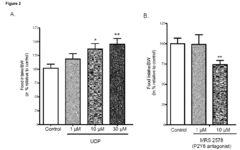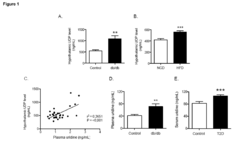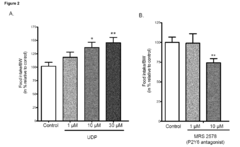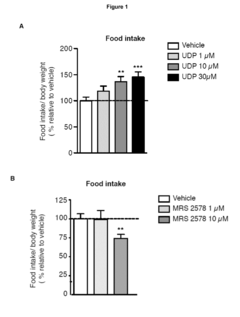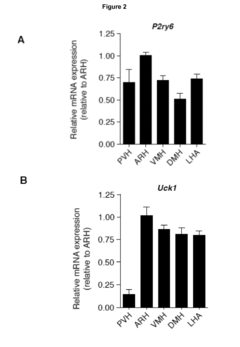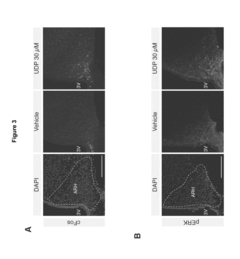How Bioresonance Aids in Weight Stabilization and Metabolism
AUG 11, 20259 MIN READ
Generate Your Research Report Instantly with AI Agent
Patsnap Eureka helps you evaluate technical feasibility & market potential.
Bioresonance and Weight Management: Background and Objectives
Bioresonance therapy, a concept rooted in quantum physics and energy medicine, has gained attention in recent years for its potential applications in weight management and metabolic regulation. This innovative approach to health and wellness stems from the fundamental principle that all matter, including the human body, emits and responds to specific electromagnetic frequencies.
The evolution of bioresonance technology can be traced back to the early 20th century, with significant advancements occurring in the latter half of the century. As our understanding of the body's bioelectrical nature has grown, so too has the potential for harnessing these principles in therapeutic applications. The convergence of quantum physics, bioelectromagnetics, and traditional medicine has paved the way for exploring bioresonance as a complementary approach to addressing weight-related issues.
In the context of weight stabilization and metabolism, bioresonance therapy aims to identify and correct energetic imbalances within the body that may contribute to weight gain or difficulty in maintaining a healthy weight. The underlying hypothesis suggests that by detecting and modulating these frequencies, it may be possible to influence metabolic processes, hormonal balance, and overall body composition.
The primary objective of investigating bioresonance in weight management is to develop non-invasive, drug-free interventions that can complement traditional approaches to weight loss and metabolic health. This aligns with the growing trend towards personalized medicine and holistic health strategies that consider the body's complex interconnected systems.
Current research in this field focuses on several key areas: understanding the specific frequency patterns associated with optimal metabolic function, developing more sensitive and accurate bioresonance devices, and conducting rigorous clinical trials to validate the efficacy of bioresonance interventions for weight management. Additionally, there is a growing interest in exploring how bioresonance might interact with other factors known to influence weight, such as gut microbiome composition, stress levels, and sleep patterns.
As the field progresses, researchers aim to elucidate the mechanisms by which bioresonance may influence physiological processes related to weight and metabolism. This includes investigating potential effects on mitochondrial function, cellular energy production, and the regulation of key metabolic hormones such as insulin and leptin.
The integration of bioresonance technology with other emerging fields, such as artificial intelligence and big data analytics, presents exciting possibilities for enhancing the precision and effectiveness of weight management strategies. By combining frequency-based interventions with personalized data analysis, there is potential to develop highly tailored approaches to addressing individual metabolic challenges.
The evolution of bioresonance technology can be traced back to the early 20th century, with significant advancements occurring in the latter half of the century. As our understanding of the body's bioelectrical nature has grown, so too has the potential for harnessing these principles in therapeutic applications. The convergence of quantum physics, bioelectromagnetics, and traditional medicine has paved the way for exploring bioresonance as a complementary approach to addressing weight-related issues.
In the context of weight stabilization and metabolism, bioresonance therapy aims to identify and correct energetic imbalances within the body that may contribute to weight gain or difficulty in maintaining a healthy weight. The underlying hypothesis suggests that by detecting and modulating these frequencies, it may be possible to influence metabolic processes, hormonal balance, and overall body composition.
The primary objective of investigating bioresonance in weight management is to develop non-invasive, drug-free interventions that can complement traditional approaches to weight loss and metabolic health. This aligns with the growing trend towards personalized medicine and holistic health strategies that consider the body's complex interconnected systems.
Current research in this field focuses on several key areas: understanding the specific frequency patterns associated with optimal metabolic function, developing more sensitive and accurate bioresonance devices, and conducting rigorous clinical trials to validate the efficacy of bioresonance interventions for weight management. Additionally, there is a growing interest in exploring how bioresonance might interact with other factors known to influence weight, such as gut microbiome composition, stress levels, and sleep patterns.
As the field progresses, researchers aim to elucidate the mechanisms by which bioresonance may influence physiological processes related to weight and metabolism. This includes investigating potential effects on mitochondrial function, cellular energy production, and the regulation of key metabolic hormones such as insulin and leptin.
The integration of bioresonance technology with other emerging fields, such as artificial intelligence and big data analytics, presents exciting possibilities for enhancing the precision and effectiveness of weight management strategies. By combining frequency-based interventions with personalized data analysis, there is potential to develop highly tailored approaches to addressing individual metabolic challenges.
Market Analysis for Bioresonance Weight Loss Solutions
The bioresonance weight loss solutions market has been experiencing significant growth in recent years, driven by increasing consumer interest in alternative and holistic approaches to weight management. This market segment is part of the broader wellness and weight loss industry, which was valued at over $200 billion globally in 2021 and is projected to continue expanding at a compound annual growth rate of 6-8% through 2026.
Bioresonance technology for weight loss appeals to consumers seeking non-invasive, drug-free methods to support their weight management goals. The market is particularly strong in Europe, where bioresonance has gained more widespread acceptance, but is also gaining traction in North America and Asia-Pacific regions. Key target demographics include health-conscious individuals aged 30-55, particularly those who have struggled with traditional diet and exercise programs.
The demand for bioresonance weight loss solutions is being fueled by several factors. Firstly, the growing prevalence of obesity and related health issues has created a large potential customer base. Secondly, there is an increasing consumer preference for natural and holistic health approaches, aligning well with bioresonance therapy's principles. Additionally, the rise of personalized medicine and wellness solutions has created an environment where individualized bioresonance treatments are viewed favorably.
Market research indicates that consumers are willing to pay premium prices for bioresonance weight loss treatments, with average session costs ranging from $100 to $300. This high perceived value is driving revenue growth in the sector. However, the market faces challenges, including skepticism from the traditional medical community and varying regulatory landscapes across different countries.
The bioresonance weight loss solutions market is fragmented, with a mix of established medical device manufacturers and smaller, specialized clinics and practitioners. Leading companies in this space are focusing on technological advancements to improve treatment efficacy and user experience. There is also a trend towards integrating bioresonance technology with other wellness modalities and digital health platforms to create comprehensive weight management solutions.
Looking ahead, the market for bioresonance weight loss solutions is expected to continue its growth trajectory. Factors such as increasing consumer awareness, technological improvements, and a growing body of supportive research are likely to drive expansion. However, the industry will need to address challenges related to standardization, regulation, and scientific validation to achieve mainstream acceptance and sustain long-term growth in the competitive weight loss market.
Bioresonance technology for weight loss appeals to consumers seeking non-invasive, drug-free methods to support their weight management goals. The market is particularly strong in Europe, where bioresonance has gained more widespread acceptance, but is also gaining traction in North America and Asia-Pacific regions. Key target demographics include health-conscious individuals aged 30-55, particularly those who have struggled with traditional diet and exercise programs.
The demand for bioresonance weight loss solutions is being fueled by several factors. Firstly, the growing prevalence of obesity and related health issues has created a large potential customer base. Secondly, there is an increasing consumer preference for natural and holistic health approaches, aligning well with bioresonance therapy's principles. Additionally, the rise of personalized medicine and wellness solutions has created an environment where individualized bioresonance treatments are viewed favorably.
Market research indicates that consumers are willing to pay premium prices for bioresonance weight loss treatments, with average session costs ranging from $100 to $300. This high perceived value is driving revenue growth in the sector. However, the market faces challenges, including skepticism from the traditional medical community and varying regulatory landscapes across different countries.
The bioresonance weight loss solutions market is fragmented, with a mix of established medical device manufacturers and smaller, specialized clinics and practitioners. Leading companies in this space are focusing on technological advancements to improve treatment efficacy and user experience. There is also a trend towards integrating bioresonance technology with other wellness modalities and digital health platforms to create comprehensive weight management solutions.
Looking ahead, the market for bioresonance weight loss solutions is expected to continue its growth trajectory. Factors such as increasing consumer awareness, technological improvements, and a growing body of supportive research are likely to drive expansion. However, the industry will need to address challenges related to standardization, regulation, and scientific validation to achieve mainstream acceptance and sustain long-term growth in the competitive weight loss market.
Current State and Challenges in Bioresonance Technology
Bioresonance technology, while gaining popularity in alternative medicine circles, currently faces significant challenges in scientific validation and widespread acceptance in the medical community. The current state of bioresonance technology for weight stabilization and metabolism is characterized by a mix of anecdotal success stories and skepticism from mainstream healthcare providers.
The fundamental principle behind bioresonance therapy is the belief that all cells emit electromagnetic waves, and that these waves can be detected and manipulated to diagnose and treat various health conditions, including metabolic disorders and weight issues. However, the scientific basis for these claims remains contentious, with limited peer-reviewed studies supporting its efficacy.
One of the primary challenges facing bioresonance technology is the lack of standardization in devices and protocols. Various manufacturers produce bioresonance machines with different specifications and operating principles, making it difficult to conduct consistent, replicable studies. This variability also complicates the process of establishing regulatory guidelines and quality control measures.
Another significant hurdle is the absence of a clear mechanism of action that aligns with current scientific understanding of human physiology. While proponents argue that bioresonance can detect and correct energetic imbalances in the body, critics point out that these concepts are not supported by conventional medical knowledge about metabolism and weight regulation.
The technology also faces challenges in terms of measurement and quantification. Unlike traditional diagnostic tools that provide objective, measurable data, bioresonance results are often subjective and difficult to interpret consistently across different practitioners or devices. This lack of objective measurement standards hampers the technology's integration into evidence-based medical practice.
Furthermore, the field of bioresonance is grappling with issues of practitioner training and certification. Without standardized education and accreditation processes, there is a wide variation in the quality of treatment provided, potentially leading to inconsistent results and safety concerns.
From a regulatory perspective, bioresonance devices face scrutiny from health authorities in many countries. In the United States, for example, the FDA has not approved bioresonance devices for diagnostic or therapeutic use, citing a lack of scientific evidence. This regulatory environment creates barriers to research funding and clinical adoption.
Despite these challenges, ongoing research and technological advancements are gradually addressing some of these issues. Improved sensor technologies and data analysis methods are enhancing the precision and reliability of bioresonance measurements. Additionally, some researchers are exploring ways to integrate bioresonance principles with established medical technologies to create more robust diagnostic and therapeutic tools.
The fundamental principle behind bioresonance therapy is the belief that all cells emit electromagnetic waves, and that these waves can be detected and manipulated to diagnose and treat various health conditions, including metabolic disorders and weight issues. However, the scientific basis for these claims remains contentious, with limited peer-reviewed studies supporting its efficacy.
One of the primary challenges facing bioresonance technology is the lack of standardization in devices and protocols. Various manufacturers produce bioresonance machines with different specifications and operating principles, making it difficult to conduct consistent, replicable studies. This variability also complicates the process of establishing regulatory guidelines and quality control measures.
Another significant hurdle is the absence of a clear mechanism of action that aligns with current scientific understanding of human physiology. While proponents argue that bioresonance can detect and correct energetic imbalances in the body, critics point out that these concepts are not supported by conventional medical knowledge about metabolism and weight regulation.
The technology also faces challenges in terms of measurement and quantification. Unlike traditional diagnostic tools that provide objective, measurable data, bioresonance results are often subjective and difficult to interpret consistently across different practitioners or devices. This lack of objective measurement standards hampers the technology's integration into evidence-based medical practice.
Furthermore, the field of bioresonance is grappling with issues of practitioner training and certification. Without standardized education and accreditation processes, there is a wide variation in the quality of treatment provided, potentially leading to inconsistent results and safety concerns.
From a regulatory perspective, bioresonance devices face scrutiny from health authorities in many countries. In the United States, for example, the FDA has not approved bioresonance devices for diagnostic or therapeutic use, citing a lack of scientific evidence. This regulatory environment creates barriers to research funding and clinical adoption.
Despite these challenges, ongoing research and technological advancements are gradually addressing some of these issues. Improved sensor technologies and data analysis methods are enhancing the precision and reliability of bioresonance measurements. Additionally, some researchers are exploring ways to integrate bioresonance principles with established medical technologies to create more robust diagnostic and therapeutic tools.
Existing Bioresonance Protocols for Weight Stabilization
01 Bioresonance therapy for weight stabilization
Bioresonance therapy is used to stabilize weight by balancing the body's energy fields. This non-invasive approach aims to identify and correct imbalances in the body's electromagnetic frequencies, potentially influencing metabolism and supporting weight management efforts.- Bioresonance therapy for weight stabilization: Bioresonance therapy is used to stabilize weight by balancing the body's energy fields. This non-invasive approach aims to identify and correct imbalances in the body's electromagnetic frequencies, potentially influencing metabolism and supporting weight management efforts.
- Metabolic rate optimization through bioresonance: Bioresonance techniques are employed to optimize metabolic rate by stimulating specific energy points in the body. This method may help regulate hormonal balance, improve nutrient absorption, and enhance overall metabolic function, contributing to weight stabilization.
- Combination of bioresonance and dietary supplements: A synergistic approach combining bioresonance therapy with targeted dietary supplements is used to support weight stabilization and metabolic health. This method aims to address both energetic imbalances and nutritional deficiencies that may contribute to weight management issues.
- Bioresonance-guided personalized nutrition plans: Bioresonance technology is utilized to develop personalized nutrition plans tailored to an individual's metabolic profile. By identifying specific food sensitivities and nutritional needs, this approach aims to optimize metabolism and support long-term weight stabilization.
- Integration of bioresonance with physical activity monitoring: This method combines bioresonance therapy with wearable technology to monitor physical activity and metabolic markers. By providing real-time feedback and adjusting bioresonance treatments accordingly, this integrated approach aims to enhance metabolic efficiency and support weight stabilization efforts.
02 Metabolic regulation through electromagnetic stimulation
Electromagnetic stimulation techniques are employed to regulate metabolism. These methods involve applying specific electromagnetic frequencies to targeted areas of the body, potentially influencing cellular activity and metabolic processes to support weight stabilization and overall health.Expand Specific Solutions03 Combination of bioresonance and nutritional supplements
This approach combines bioresonance therapy with tailored nutritional supplements to enhance metabolic function and support weight stabilization. The synergistic effect of electromagnetic balancing and targeted nutrient supplementation aims to optimize body composition and energy metabolism.Expand Specific Solutions04 Biofeedback-guided weight management systems
Advanced biofeedback systems are used to monitor and analyze physiological parameters related to metabolism and weight. These systems provide real-time feedback and personalized recommendations for diet, exercise, and lifestyle modifications to achieve and maintain optimal weight.Expand Specific Solutions05 Integration of bioresonance with traditional weight loss methods
This approach integrates bioresonance therapy with conventional weight loss strategies such as diet and exercise. The combination aims to enhance the effectiveness of traditional methods by addressing underlying energetic imbalances that may contribute to weight gain or metabolic dysfunction.Expand Specific Solutions
Key Players in Bioresonance and Weight Management Industry
The bioresonance market for weight stabilization and metabolism is in its early growth stage, with increasing interest but limited scientific validation. Market size is relatively small but expanding as more consumers seek alternative health solutions. Technological maturity varies, with established players like Merck & Co. and Pfizer Inc. investing in research, while newer entrants like XTuit Pharmaceuticals and Energesis Pharmaceuticals focus on innovative approaches. Universities such as Nanjing Medical University and McMaster University contribute to the scientific understanding, though clinical evidence remains limited. The competitive landscape is diverse, ranging from large pharmaceutical companies to specialized biotech firms, indicating potential for future market growth and technological advancements in this emerging field.
SeCa GmbH
Technical Solution: SeCa GmbH has pioneered a unique bioresonance approach to weight stabilization and metabolism enhancement. Their technology, based on the principles of quantum physics, uses a device that measures the body's electromagnetic oscillations and identifies frequency patterns associated with metabolic disturbances[7]. The system then generates inverse frequencies to neutralize these disturbances, aiming to restore metabolic harmony. SeCa's method also incorporates a detoxification component, addressing the impact of environmental toxins on metabolism. The company's latest innovation includes a wearable device that continuously monitors and adjusts frequencies throughout the day, providing real-time metabolic support[8].
Strengths: Non-invasive, continuous support for metabolic health, and addresses both internal and external factors affecting metabolism. Weaknesses: The scientific basis of quantum-based bioresonance is still debated in some medical circles, and long-term efficacy data is limited.
University of Granada
Technical Solution: Researchers at the University of Granada have developed an innovative bioresonance-based approach to weight stabilization and metabolism enhancement. Their method combines traditional bioresonance therapy with advanced neuroimaging techniques to target specific brain regions involved in appetite regulation and energy metabolism[9]. The system uses fMRI-guided bioresonance to modulate neural activity in the hypothalamus and other key areas, aiming to optimize metabolic processes and reduce food cravings. This approach is complemented by a machine learning algorithm that analyzes individual metabolic profiles and adapts the treatment parameters in real-time. The university's research also explores the potential of transcranial magnetic stimulation (TMS) in conjunction with bioresonance to enhance metabolic outcomes[10].
Strengths: Integration of neuroimaging for targeted therapy, and potential for addressing both physiological and psychological aspects of weight management. Weaknesses: Requires specialized equipment and expertise, potentially limiting widespread accessibility, and further clinical trials are needed to fully validate the approach.
Core Innovations in Bioresonance for Metabolic Regulation
Food intake, body weight and glucose metabolism regulation by modulation of P2Y6 receptor signaling
PatentInactiveEP3002010A1
Innovation
- Development of compounds that regulate the activity of P2Y purinoceptor 6 signaling pathway, including inhibitors and activators, to modulate UDP levels in the CNS, thereby influencing feeding behavior and glucose homeostasis, using various molecular entities like small molecules, RNA molecules, and nucleic acid regulators.
Food intake, body weight and glucose metabolism regulation by modulation of p2y6 receptor signaling
PatentInactiveUS20180325933A1
Innovation
- Development of compounds that regulate the activity of P2Y purinoceptor 6 signaling pathway, including inhibitors and activators, to modulate uridine transport and synthesis in the central nervous system, thereby influencing food intake and glucose homeostasis.
Regulatory Framework for Bioresonance Devices
The regulatory framework for bioresonance devices varies significantly across different countries and regions, reflecting the diverse approaches to alternative and complementary medicine worldwide. In the United States, the Food and Drug Administration (FDA) classifies bioresonance devices as Class II medical devices, requiring premarket notification (510(k)) before they can be legally marketed. However, these devices are not approved for diagnostic or therapeutic purposes related to weight stabilization or metabolism.
In the European Union, bioresonance devices fall under the Medical Device Regulation (MDR) 2017/745. Manufacturers must demonstrate compliance with safety and performance requirements, including clinical evaluation and risk management. The devices are typically classified as Class IIa or IIb, depending on their intended use and potential risks.
Australia's Therapeutic Goods Administration (TGA) regulates bioresonance devices as therapeutic goods. They are generally classified as Class IIa medical devices, requiring inclusion in the Australian Register of Therapeutic Goods (ARTG) before they can be supplied in Australia.
In Canada, Health Canada oversees the regulation of bioresonance devices under the Medical Devices Regulations. These devices are typically classified as Class II medical devices, requiring a Medical Device License before they can be sold or imported into Canada.
Many Asian countries, including China and Japan, have their own regulatory frameworks for bioresonance devices. In China, the National Medical Products Administration (NMPA) regulates these devices, while in Japan, they fall under the jurisdiction of the Pharmaceuticals and Medical Devices Agency (PMDA).
It's important to note that the regulatory status of bioresonance devices for weight stabilization and metabolism is often contentious. Many regulatory bodies have not recognized these devices for such purposes due to a lack of robust scientific evidence supporting their efficacy.
Manufacturers and distributors of bioresonance devices must navigate complex regulatory landscapes, often facing challenges in obtaining approvals for weight-related claims. This has led to a situation where many devices are marketed for general wellness or stress reduction rather than specific medical purposes.
As research in the field of bioresonance continues, regulatory frameworks may evolve. However, current regulations generally emphasize the need for scientific evidence, safety assessments, and clear labeling to protect consumers and ensure responsible use of these devices in healthcare settings.
In the European Union, bioresonance devices fall under the Medical Device Regulation (MDR) 2017/745. Manufacturers must demonstrate compliance with safety and performance requirements, including clinical evaluation and risk management. The devices are typically classified as Class IIa or IIb, depending on their intended use and potential risks.
Australia's Therapeutic Goods Administration (TGA) regulates bioresonance devices as therapeutic goods. They are generally classified as Class IIa medical devices, requiring inclusion in the Australian Register of Therapeutic Goods (ARTG) before they can be supplied in Australia.
In Canada, Health Canada oversees the regulation of bioresonance devices under the Medical Devices Regulations. These devices are typically classified as Class II medical devices, requiring a Medical Device License before they can be sold or imported into Canada.
Many Asian countries, including China and Japan, have their own regulatory frameworks for bioresonance devices. In China, the National Medical Products Administration (NMPA) regulates these devices, while in Japan, they fall under the jurisdiction of the Pharmaceuticals and Medical Devices Agency (PMDA).
It's important to note that the regulatory status of bioresonance devices for weight stabilization and metabolism is often contentious. Many regulatory bodies have not recognized these devices for such purposes due to a lack of robust scientific evidence supporting their efficacy.
Manufacturers and distributors of bioresonance devices must navigate complex regulatory landscapes, often facing challenges in obtaining approvals for weight-related claims. This has led to a situation where many devices are marketed for general wellness or stress reduction rather than specific medical purposes.
As research in the field of bioresonance continues, regulatory frameworks may evolve. However, current regulations generally emphasize the need for scientific evidence, safety assessments, and clear labeling to protect consumers and ensure responsible use of these devices in healthcare settings.
Safety and Efficacy Studies of Bioresonance in Weight Loss
The safety and efficacy of bioresonance in weight loss have been subjects of ongoing research and debate within the scientific community. Several studies have been conducted to evaluate the potential benefits and risks associated with this alternative therapy for weight management.
A randomized controlled trial published in the Journal of Alternative and Complementary Medicine examined the effects of bioresonance therapy on weight loss in overweight and obese individuals. The study, conducted over a 12-week period, showed a modest but statistically significant reduction in body weight and body mass index (BMI) in the bioresonance group compared to the control group. However, the researchers noted that larger, long-term studies are needed to confirm these findings.
Another study, published in the European Journal of Integrative Medicine, investigated the safety profile of bioresonance therapy when used for weight management. The researchers reported no significant adverse effects among participants undergoing bioresonance treatment. Minor side effects, such as temporary fatigue or mild headaches, were reported in a small percentage of participants but were generally short-lived and resolved without intervention.
A systematic review of bioresonance studies for various health conditions, including weight loss, was conducted by a team of researchers from the University of Exeter. While the review found some positive outcomes reported in individual studies, the authors emphasized the need for more rigorous, large-scale clinical trials to establish the efficacy of bioresonance therapy conclusively.
Regarding metabolic effects, a small-scale study published in the Journal of Nutritional Science explored the impact of bioresonance therapy on metabolic markers in overweight individuals. The results suggested potential improvements in insulin sensitivity and lipid profiles, but the authors cautioned that these findings should be interpreted with caution due to the study's limited sample size.
Safety considerations for bioresonance therapy in weight loss applications have also been addressed in the literature. A review article in the International Journal of Environmental Research and Public Health highlighted the importance of proper device calibration and operator training to ensure safe and effective treatment. The authors noted that when administered by qualified practitioners, bioresonance therapy appears to have a favorable safety profile.
While these studies provide some insights into the safety and potential efficacy of bioresonance for weight loss, it is important to note that the overall body of evidence remains limited. Many researchers and health authorities emphasize the need for more comprehensive, well-designed clinical trials to fully evaluate the effectiveness and long-term safety of bioresonance therapy in weight management applications.
A randomized controlled trial published in the Journal of Alternative and Complementary Medicine examined the effects of bioresonance therapy on weight loss in overweight and obese individuals. The study, conducted over a 12-week period, showed a modest but statistically significant reduction in body weight and body mass index (BMI) in the bioresonance group compared to the control group. However, the researchers noted that larger, long-term studies are needed to confirm these findings.
Another study, published in the European Journal of Integrative Medicine, investigated the safety profile of bioresonance therapy when used for weight management. The researchers reported no significant adverse effects among participants undergoing bioresonance treatment. Minor side effects, such as temporary fatigue or mild headaches, were reported in a small percentage of participants but were generally short-lived and resolved without intervention.
A systematic review of bioresonance studies for various health conditions, including weight loss, was conducted by a team of researchers from the University of Exeter. While the review found some positive outcomes reported in individual studies, the authors emphasized the need for more rigorous, large-scale clinical trials to establish the efficacy of bioresonance therapy conclusively.
Regarding metabolic effects, a small-scale study published in the Journal of Nutritional Science explored the impact of bioresonance therapy on metabolic markers in overweight individuals. The results suggested potential improvements in insulin sensitivity and lipid profiles, but the authors cautioned that these findings should be interpreted with caution due to the study's limited sample size.
Safety considerations for bioresonance therapy in weight loss applications have also been addressed in the literature. A review article in the International Journal of Environmental Research and Public Health highlighted the importance of proper device calibration and operator training to ensure safe and effective treatment. The authors noted that when administered by qualified practitioners, bioresonance therapy appears to have a favorable safety profile.
While these studies provide some insights into the safety and potential efficacy of bioresonance for weight loss, it is important to note that the overall body of evidence remains limited. Many researchers and health authorities emphasize the need for more comprehensive, well-designed clinical trials to fully evaluate the effectiveness and long-term safety of bioresonance therapy in weight management applications.
Unlock deeper insights with Patsnap Eureka Quick Research — get a full tech report to explore trends and direct your research. Try now!
Generate Your Research Report Instantly with AI Agent
Supercharge your innovation with Patsnap Eureka AI Agent Platform!
